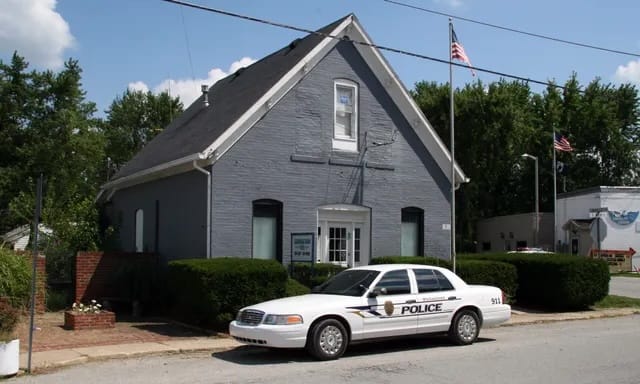It’s been over two years since Ajike “AJ” Owens, a 35-year-old Black mother of four, was killed by her neighbor, Susan Lorincz, while Owens knocked at her front door. It made national news, and there was even a Netflix documentary titled The Perfect Neighbor. The film reconstructs the events leading up to the killing, the trial, and the broader implications of race, fear, and Florida’s “Stand Your Ground” law. That law didn’t keep Lonincz from being sentenced to 25 years in prison after being convicted of first-degree felony murder.
An unnamed resident of Whitestown, Indiana, decided to test the strength of Indiana’s Stand Your Ground laws. When a Hispanic mother of four came to their door after being given the wrong address by the cleaning company that hired her. Someone inside the home decided to shoot through the locked wooden door, striking Maria Florinda Rios Perez de Velasquez in the head and killing her. She fell back into the arms of her husband.
One might wonder if Whitestown, Indiana, got its name because it was initially an all-white community. It was, but the city was named after Senator Albert White, a Whig once appointed by Abraham Lincoln as a federal judge in 1864. Whitestown was renamed in 1851 at a time when the State of Indiana, allegedly a free state, banned Black people from settling there. Whitestown was originally called Germantown, reflecting the German immigrants who founded it in 1834.
Indiana became one of the few free states with a formal constitutional ban on Black settlement, reinforcing its status as a racially exclusionary state. The ban was not repealed until 1866, after Reconstruction reforms mandated it. Despite repeal, racial exclusion persisted through informal practices, local ordinances, and sundown town policies well into the 20th century.
Whitestown is no longer exactly a sundown town. While white residents make up 81% of its 15,617 population, the town now also has a 7% Asian, 4% Black, and 4% Hispanic community. Whitestown’s Hispanic population is growing modestly, often concentrated in newer mixed-income housing developments. The town’s economic growth and proximity to Indianapolis have attracted a more diverse population in recent years. While still a small percentage, Hispanic residents contribute to the town’s labor force, education system, and cultural visibility, especially in the service and construction sectors.
Indiana was the most powerful state-level stronghold of the Ku Klux Klan during its 1920s resurgence, with more members than any other state and deep control over politics, law enforcement, and public life. At its peak, the Indiana Klan had an estimated 250,000 members — nearly one-third of native-born white men in the state.
In January 2021, racist flyers bearing slogans like “White Lives Matter” and “No White Guilt” were distributed across several neighborhoods in Whitestown. The incident prompted a police investigation and public condemnation from town officials. Messages included “White Lives Matter” and “No White Guilt,” placed inside plastic baggies and thrown into driveways.
Residents reported finding the flyers early in the morning across multiple neighborhoods. Whitestown Police investigated the incident as “suspicious activity.” Officers collected flyers and spoke with residents who reported them. Community members expressed concern and outrage, emphasizing that such messaging does not reflect Whitestown’s values. Indeed, Whitestown didn’t invite the Klan to target their community; it’s also true that the Klan thought their message would be well-received in Whitestown.
Regarding Maria de Velasquez, officers responded to a 911 call on November 5 reporting a possible home invasion. Maria was found dead on the front porch with a gunshot wound to the head. The shot was fired from inside the home, according to Capt John Jurkash of the Whitestown Metropolitan Police Department. Police have not publicly identified the shooter, and no arrests have been announced.
The case was submitted to the Boone County Prosecutor’s Office on November 7 for review. Prosecutor Kent Eastwood stated the file includes recorded statements, digital data, diagrams, and measurements, and a team is reviewing all evidence. The Boone County Coroner ruled the death a homicide caused by a single gunshot wound to the head.
Police have emphasized procedural caution, but the lack of immediate charges or public identification of the shooter raises questions about racial bias, legal impunity, and the vulnerability of immigrant laborers. This case can be ethically framed alongside similar incidents like the killing of Ajike Owens in Florida to expose systemic patterns. I live 90 miles from where the Florida shooting took place, and it took four days of constant pressure from the community before Ocala police pressed charges. Three days after Maria’s murder, there is no similar uproar, police haven’t identified the shooter, and the press hasn’t identified the residents of the home. A police statement suggests concern that the shooter and their family might be harmed. I see no such concern for Maria’s family.
“We understand that incidents like this can cause concern and speculation,” the department said. “We respectfully ask the public to place their trust in the investigative process and refrain from sharing unverified information. These cases are often complex and require time to fully understand. Misinformation can be harmful to those involved and to the integrity of the investigation.”
Maria’s husband, Mauricio Velasquez, called for the police to do the right thing.
“What I need now is for there to be justice," he said regarding his wife being shot, "because he took her life; in that sense, I don’t believe that’s human.”
This post originally appeared on Substack and is edited and republished with author's permission. Read more of William Spivey's work on Medium. And if you dig his words, buy the man a coffee.
